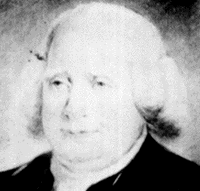Carter, Braxton

Carter Braxton was born into a wealthy Virginia planting family in 1736. He studied at William and Mary College where he received his degree in 1755. In 1761, at the age of twenty-five, he entered the House of Burgesses where he served until 1775.
Braxton chose to side with the Patriots when troubles first developed with the British. In 1769 he signed the Virginia Resolves, a document which challenged Parliament's efforts to control Virginia's affairs. Between 1774 and 1776 he took part in several Revolutionary conventions, and even accepted a post on a temporary governing body, the Council of Safety, when the royal government was dissolved. Later in this same year, he was also chosen to fill Peyton Randolph's vacancy at the Continental Congress.
When Braxton first arrived in Philadelphia, he was rather critical of the revolutionary movement. He later gave into the majority though, and signed the Declaration of Independence in 1776. His general conservatism and a lack of confidence in the notion of a popular government had him removed from the Congress within a year, however, and the only position he held after that, one which he held for the rest of his life, was one on the Virginia state legislature.
The war for independence caused Braxton a great deal of financial stress. He had invested heavily in shipping, and his vessels were destroyed by the British. Furthermore, many of the plantations he had acquired over time were also ruined by enemy forces. In the end, the failure of other commercial assets ruined him. He died at the age of sixty-one in 1797 and was buried in his family cemetery near Chericoke.
 >
>